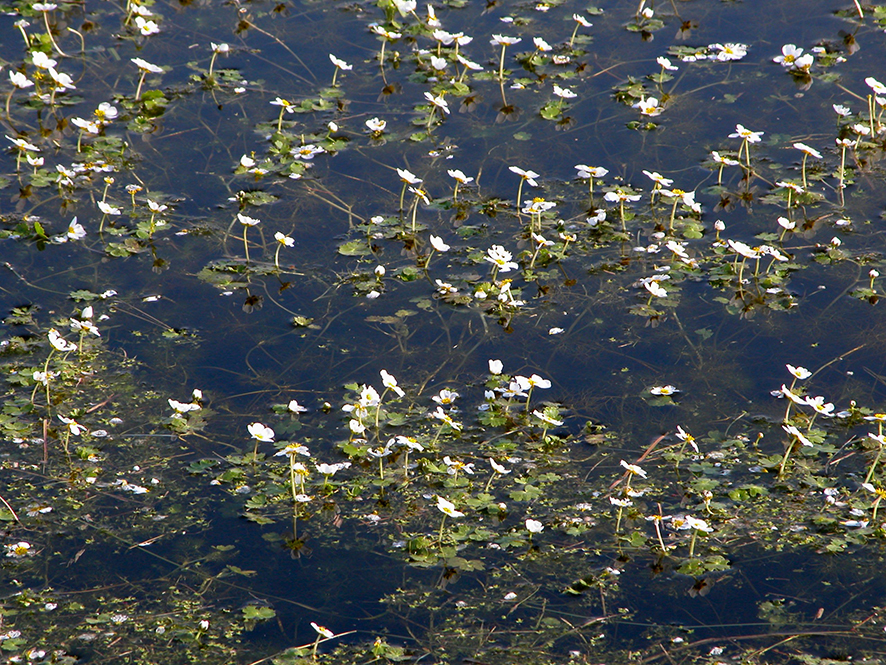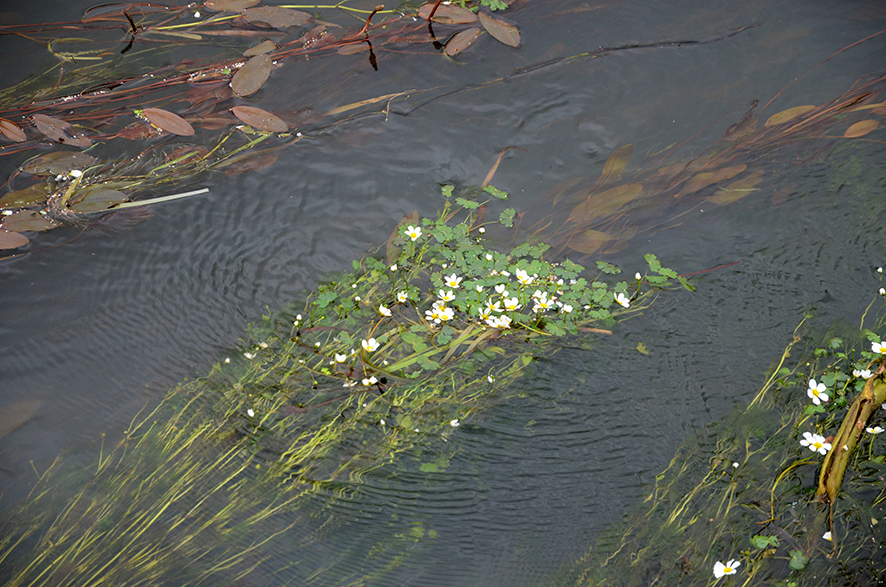Pond water-crowfoot
- The anemone of the water
Crowfoot belong to the same family as the forest floor anemones, and they look like also anemones when they spread out like white clouds in the watercourse. There are several species of crowfoot, all with white flowers and a yellow centre. The flower is usually pollinated by hoverflies, which are lured to the flower by small honey stores or nectaries, which are filled with nectar. The shapes of the nectaries vary from species to species, and can be used in identifying the species. If the flowers are flooded by high water, the flower remains closed under water, and they pollinate themselves. Pond water-crowfoot has two different kinds of leaves; filamentous underwater leaves and kidney-shaped overlapping floating leaves. The common water crowfoot grows in lakes and watercourses and is most abundant in waters with a good water quality.

Facts: The most common species of water crowfoot is the pond water-crowfoot, and common water crowfoot. Both species are found in freshwater watercourses and lakes, and both species have both underwater leaves and floating leaves. They bloom in May - August with white flowers. The flower of the pond water-crowfoot is 2.5-3 cm in diameter and it has overlapping petals. The common water crowfoot has a flower that is 1-2 cm in diameter and has separated petal.


